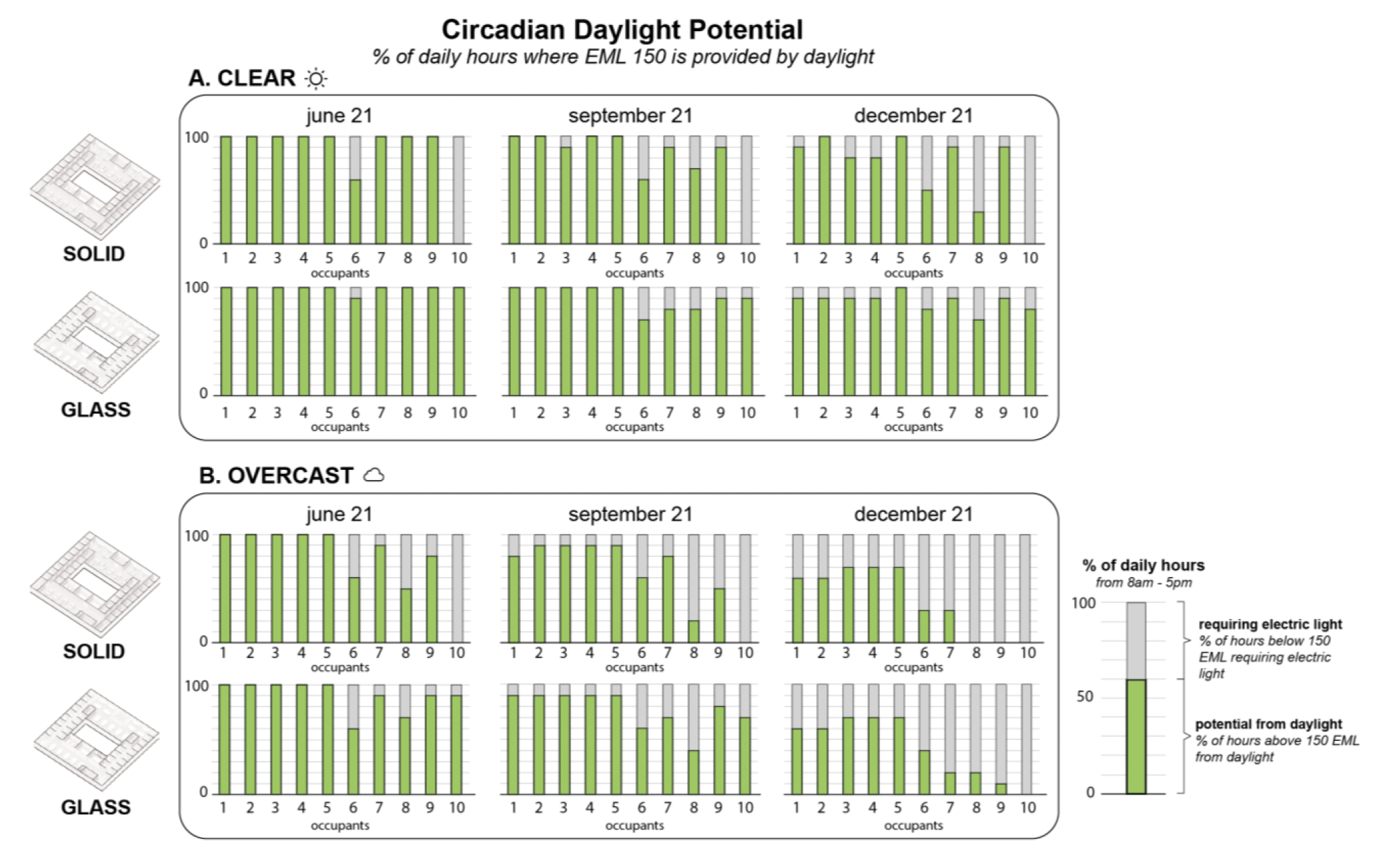The paper titled, “Disparities in circadian potential: the impact of building form and interior wall composition on dynamic light exposure” was accepted to Building Simulation 2023 after a double-blind peer-review process. The paper was co-authored by Siobhan Rockcastle, Hadley Carlberg (UO B.Arch 2023′), Maryam Esmailian (UO PhD Candidate), and Maria Amundadottir (Oculight Analytics, Reykjavik). This paper describes a weighted approach to predicting the impact of building form and occupant behavior on the equity of daylight exposure to support circadian health across a population of occupants. While the workflow does not integrate electric light sources, it describes a method of predicting the circadian daylight potential of a building and can help identify which occupants would be most reliant on electric light sources based on deficiencies in daylight access.
Abstract
This paper builds on previous efforts to evaluate and compare dynamic light-exposure profiles over time and across space. This paper examines two office-floor plans through the eye-level exposure of 10 representative occupant profiles as they move throughout a series of seated locations over time. These 10 profiles are then used to create a weighted score for the full population of building occupants by applying the performance of each representative profile to the number of similar profiles in that occupant class. This allows us to compare the percentage of occupants that are expected to meet the WELL v2 Feature L03 150 EML target at a building scale, while also accounting for typical use patterns and advocating for the importance of dynamic behavior. The findings presented in this paper illustrate the impact of building form, interior material, and typical occupancy scenarios on non-visual health across a dynamic occupant population.
